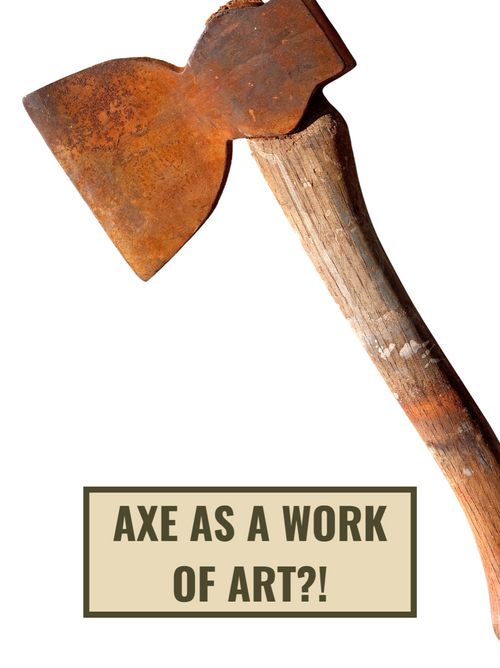The mystery of the humble handaxe
Feb 11, 2022 · 2 mins read
0
Share

In The Mating Mind, G. Miller notes our ancestors made hand axes for a million years to create other hunting and gathering tools. But here's the mystery of the hand axe: archeological digs show they were made with much more "skill, design, and symmetry" than was necessary. Why?
Save
Share
Some hand axes were too big to be regularly used. One type was very "heavy and clumsy" - another was "too small to be of much use"(two inches long.) To add to the mystery: "the finest handaxes show no sign of use: no visible chips, no evidence of edge wear under the microscope."
Save
Share
Why make hand axes to perfection - to the degree that they are "sharp enough to cut fingers a million years later" - and then never use them? Because they were never made for their utility value - they were made for their show off value.
Save
Share
Acquiring basic familiarity with a hand axe takes 6 months - expertise can take years. To use a hand axe is to risk physical injury (from the flying shards) and serious injections (via bleeding cuts.) Using a hand axe makes you vulnerable - and therefore shows your strength.
Save
Share
To expertly create and use a hand axe takes a "combination of physical strength, hand-eye coordination, careful planning, conscientious patience, pain tolerance, and resistance to infection." Such difficulty made the hand axe a reliable "measure of strength, skill and character."
Save
Share
Hand axes were made symmetrically. Symmetry makes things very easy to observe, but symmetry is also very hard to produce. Therefore, symmetrical hand axes fulfill two goals: getting attention, and proving your genetic fitness via doing something hard.
Save
Share
While "pragmatic handaxes" were also made, Miller writes that "the very large, very small and very symmetrical ones were produced by males as sexual displays." The hand axe looks like a basic survival tool at first - but a deeper analysis reveals its use as a "sexual attractant."
Save
Share
Miller sources some of his research on hand axes from As We Know It by Marek Kohn. Producing ornate hand axes and using them takes intelligence plus wastes time and energy. It's a self imposed handicap - that only the truly fit and resilient can afford.
Save
Share
Miller writes that hand axes may be the first "art-objects produced by our ancestors" - items on which precious resources were squandered not just for their survival utility, but also because they made the hand axe wielder more attractive to the opposite sex.
Save
Share
Bottom line. Our ancestors didn't just have to survive - they also had to reproduce. A lot of human behavior - and tools - evolved not just because they helped with survival, but because they helped with seduction. The hand axe may be a strange example that helped us do both.
Save
Share
0